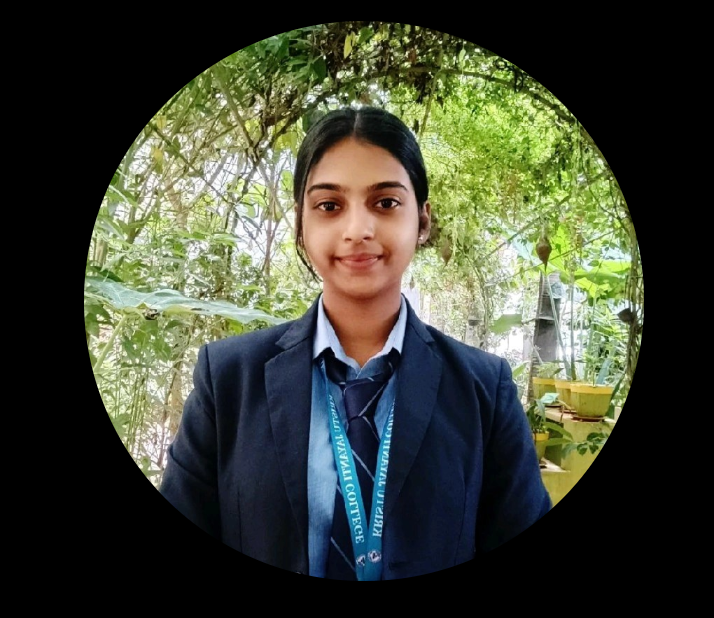
Barcode
Biotechnology

Learned species identification and gained hands-on skills in using tools like Chromas Pro, BioEdit, BLASTn, ClustalX, and MEGA for bioinformatics analysis.
Grateful to the team Barcode Biotechnology for this opportunity !

This insightful session enhanced my understanding of designing impactful research and turning academic ideas into publishable outcomes. Excited to apply these learnings in my future research journey!

Grateful to Barcode Biotechnology for the hands-on certification in DNA Sequence Analysis
(Aug 2025).
Explored tools like BLASTn, MEGA, BioEdit and more.

I am excited to share that I have successfully participated in the webinar titled “DNA Barcoding-Based Identification of Fungal Species” organized by Barcode Biotechnology, Bengaluru , India.
TESTIMONIALS
Invest ₹3700, gain a biotech career worth lakhs

Udayam Registered Company: UDYAM-KR-02-0095518
We Are Visionaries
At Barcode Biotechnology, our vision is to build a comprehensive and globally significant DNA barcoding library that empowers full-scale implementation of meta-barcoding and environmental DNA (eDNA) barcoding. We aim to make species identification faster, more accurate, and universally accessible—bridging the gap between biodiversity and biotechnology. Our mission for the year 2025 is anchored in the ambitious 1000 Barcode Initiative 2025, through which we pledge to sequence and barcode 1000 yet-to-be-documented species. By unlocking the genetic identities of these unexplored organisms, we strive to support conservation, research, and innovation across life sciences.



About Us
Barcode Biotechnologies is an Indian biotech company focused on DNA sequencing-based analysis.
We provide advanced genomic solutions for research, diagnostics, and industry.
Our services help scientists and businesses make data-driven decisions.
With cutting-edge technology, we ensure accuracy and efficiency in genetic analysis.
Committed to innovation, we strive to advance biotechnology for a better future.

1
Multi-locus Gene Sequencing
🧪 Go beyond one gene – compare multiple markers for deeper phylogenetic insights.🌳 Best suited for evolutionary studies and taxonomic clarity.

2
Animal Barcoding
🦋 Fish, insects, or mammals – we barcode them all using COI genes.
🔎 Track species, trace origins, and ensure biodiversity compliance.

3
Insect Barcoding
🐛 Identify even the tiniest insect with pinpoint precision.🧬 A must-have tool for entomologists, pest control, and biodiversity studies.


4
Sanger's Bi-Directional Sequencing
🔬 Gold-standard sequencing from both DNA ends for high accuracy and confidence.
📈 Perfect for precise gene analysis, mutation detection, and clone validation.

5
Two-Way Sequencing
🔁 Sequence both strands for double assurance and clean reads.
🧬 Ideal for critical DNA barcoding and genetic confirmation.

6
Species Identification
🧬 Unknown organism? We decode its identity down to the species level.
📋 Get fast, accurate reports for research, ecology, or forensics.


7
Meta-Barcoding
🌍 Decode complex environmental DNA from soil, water, or gut.
🔬 Reveal entire microbial or species communities in one go.

8
Plant Barcoding
🌿 Confirm plant species using chloroplast gene regions.
🧾 Essential for herbal validation, botany research, and biodiversity audits.

9
Wildlife Identification
🐾 From feathers to feces – trace and ID wild species with DNA.
🛡️ Perfect for wildlife crime forensics, conservation, and habitat studies.


10
Antibiotic Resistance Profiling
🧪 Detect resistance genes quickly and efficiently.
🚫 Help combat superbugs with targeted resistance data.

11
Antinobacterial Identification
🦠 Identify bacteria that inhibit others – nature’s own antibiotics.
🔬 Explore new candidates for biocontrol or drug discovery.

12
Fungal Identification
🍄 ITS-based barcoding to accurately ID fungi in soil, air, or samples.
🔍 Vital for agriculture, pathology, and environmental research.


13
Mixed Culture Identification
🧫 Can't separate your microbes? We'll decode the mix with precision.
🔎 Identify each species present in co-cultures or contaminated samples.

14
Mushroom Identification
🍄 Solve the mushroom mystery using DNA barcoding.
🧬 Essential for foragers, mycologists, and food safety experts.

15
Phage Identification
🦠 Isolate and ID bacteriophages at the molecular level.
🔬 Support phage therapy, biotech innovations, and microbiome research.

Identifies bacteria, fungi, and other microbes using genetic sequencing.
Essential for medical diagnostics, food safety, and environmental monitoring.
Microbial Identification
Measures the activity of genes under different conditions.
Used in medical research, drug development, and disease diagnosis.
Gene Expression Analysis
Custom synthesis of short DNA or RNA sequences for research and diagnostics.
Used in PCR, gene editing, molecular probes, and therapeutic applications.
Oligonucleotide Synthesis
DNA-based analysis to verify food authenticity and detect adulteration.
Ensures compliance with food safety regulations and quality standards.
Food Product Testing

INTERNSHIP


WINTER INTERNSHIP
POWERED BY BARCODE BIOTECHNOLOGY

PUBLICATIONS

Siddhartha Debgoswami (2024). Approach to Isolating and Identifying Micrococcus luteus. Kristu Jayanti College. https://doi.org/10.13140/RG.2.2.22753.11366

Rapheal, A. K. (2024). Decoding Probiotics: Species Authentication Using 16S and ITS Gene Sequencing. Kristu Jayanti College. https://doi.org/10.13140/RG.2.2.15295.11688

Rapheal, A. K. (2024). Decoding Probiotics: Species Authentication Using 16S and ITS Gene Sequencing. Kristu Jayanti College. https://doi.org/10.13140/RG.2.2.15295.11688

Ritikha Sharma (2024). Plant Leaves and Their Secret Residents: A Study of Endophytic Bacteria. Kristu Jayanti College. https://doi.org/10.13140/RG.2.2.28533.69604

Rao, A. (2024). Motorbike Microbiome: A Study of Bacterial Species on Riders’ Touchpoints. Kristu Jayanti College. https://doi.org/10.13140/RG.2.2.12261.10724

Shambhavi Kumari (2024). Gut Microbiota of Neocaridina davidi: A Dive into Bacterial Diversity. Kristu Jayanti College. https://doi.org/10.13140/RG.2.2.15351.12963

Tharun Balaji (2024). Culturing Artemia, Culturing Vibrio: A Microbial Odyssey. Kristu Jayanti College. https://doi.org/10.13140/RG.2.2.18613.18404

Praisy, S. (2024). Microbes on Money: Exploring the Bacterial Diversity of Indian Currency Background. SRM Arts & Science College. https://doi.org/10.13140/RG.2.2.18467.05924

Kumar, N. (2024). Bacteria in Artemia Ecosystems: From Isolation to Genetic Insights. Nandha Arts and Science College. https://doi.org/10.13140/RG.2.2.21670.43841

Manokaran, S., Prasannakumar, C., Ansari, K. G. M. T., Joydas, T. V., Manikandan, K. P., Aarif, K. M., Raja, S., Ramasamy, P., & Sudhagar, T. (2024). Barcoding, structural, and genetic variation of morphologically adopted polychaetes (Annelida: Paronidae, Lumberineridae, Spionidae) using mitochondrial COI gene sequences from the Bay of Bengal shelf including Oxygen Minimum Zone. In Regional Studies in Marine Science (Vol. 76, p. 103613). Elsevier BV. https://doi.org/10.1016/j.rsma.2024.103613

Aziz, A. T., Alshehri, M. A., Alasmari, A., Prasannakumar, C., Panneerselvam, C., & Sayed, S. (2022). Haplotype diversity of palm weevil in Saudi Arabia through ITS gene sequencing. In Journal of King Saud University - Science (Vol. 34, Issue 3, p. 101893). Elsevier BV. https://doi.org/10.1016/j.jksus.2022.101893

PrasannaKumar, C., Rethinavelu, S., & Sadaiappan, B. (2020). First barcodes of Bathynomus kensleyi (Lowry & Dempsey, 2006) and Bathynomus decemspinosus (Shih, 1972) from the Southeast coast of India. In Regional Studies in Marine Science (Vol. 40, p. 101489). Elsevier BV. https://doi.org/10.1016/j.rsma.2020.101489

Palanisamy, S. K., Prasanna Kumar, C., Paramasivam, P., & Sundaresan, U. (2020). DNA barcoding of horn snail Telescopium telescopium (Linnaeus C, 1758) using mt-COI gene sequences. In Regional Studies in Marine Science (Vol. 35, p. 101109). Elsevier BV. https://doi.org/10.1016/j.rsma.2020.101109

Sadaiappan, B., Prasannakumar, C., Subramanian, K., & Subramanian, M. (2019). Metagenomic data of vertical distribution and abundance of bacterial diversity in the hypersaline sediments of Mad Boon-mangrove ecosystem, Bay of Bengal. In Data in Brief (Vol. 22, pp. 716–721). Elsevier BV. https://doi.org/10.1016/j.dib.2018.12.028

Velmurugan, S., Prasannakumar, C., Manokaran, S., Ajith Kumar, T., Samkamaleson, A., & Palavesam, A. (2013). DNA barcodes for marine fungal identification and discovery. In Fungal Ecology (Vol. 6, Issue 5, pp. 408–418). Elsevier BV. https://doi.org/10.1016/j.funeco.2013.05.003

Kumar, P., Akbar John, B., & Kanagasabapathy, V. (2016). Mitochondrial DNA Diversity of Wild and Hatchery Reared Strains of Indian Lates calcarifer (Bloch). In DNA Barcoding in Marine Perspectives (pp. 203–212). Springer International Publishing. https://doi.org/10.1007/978-3-319-41840-7_13

Sekar, V., Rajasekaran, R., Prasannakumar, C., Sankar, R., Sridhar, R., & Sachithanandam, V. (2016). Morphological and COI Sequence Based Characterisation of Marine Polychaete Species from Great Nicobar Island, India. In DNA Barcoding in Marine Perspectives (pp. 89–111). Springer International Publishing. https://doi.org/10.1007/978-3-319-41840
